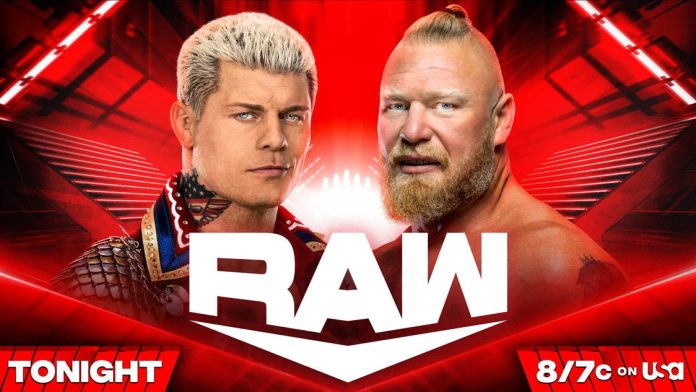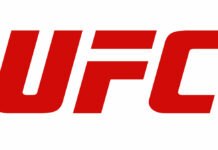
More than 11 years ago, Raw went to three hours, a move that would’ve seemed preposterous prior to that, especially considering the damage that a third hour did to Nitro in 1999. But, money talks and for a portion of its thirty-year existence, the Monday night show had a three-hour format.
This isn’t anything ground-breaking as many people have said it, but not only is three hours weekly too long, I still doubt that any promotion could book a compelling three-hour show on a regular basis. However, the USA network wanted a third hour of a consistent number, albeit a number that almost always decreases throughout the broadcast so they were willing to pay the WWE enough money to ass the extra hour to the program. I’m not sure if even the heyday of the Attitude era could’ve kept a strong third hour number, considering that in the 90s, Stone Cold Steve Austin wasn’t overexposed so the audience anticipated his appearances. If a performer is on multiple segments of a show, the less any individual segment can stand out.
This week’s edition of Raw was a prime example of how to maximize the assets of a broadcast.
Despite the complete disappointment of the finish at Wrestlemania, Cody Rhodes remains extremely popular, a presentation that was enhanced in his hometown of Atlanta, Georgia. As we know, professional wrestling, as much as some get caught up in the debate about star ratings, is based on drama and the emotional investment from it. When the audience believes in the baby face, there’s a connection with the crowd that draws money. It’s a drastic example, but again to go back to the late-90s, the fans believed in Stone Cold Steve Austin and were willing to pay to see him battle Vince McMahon. It didn’t matter if Austin was chasing the title or defending it, the audience was willing to pay to rally him to victory because they could identify with the character, a persona that was largely based on the real-life Steve Austin. That goes to the next piece of the puzzle as far as how that emotional investment is made into the characters, and it’s the level of authenticity. Too often, especially in the modern era, way too many performers use social media to break the fourth wall so to speak. You can’t expect the fans to believe that The Miz is a jerk on television if the fact that he’s actually a nice guy in real life can be seen on social media five minutes before Raw goes on the air. By all accounts, Mike Mizanin is a great guy, but the audience doesn’t need to know that about a heel in sports entertainment, and the fact that revealing it is done so causal hinders his on-screen presentation.
That’s why the opening segment of Raw this week was done so well. Cody Rhodes as the main event baby face that gives 100% for the audience in his quest to win the world championship is a believable narrative. Given Cody’s family history, there’s an authenticity to his journey that the audience can recognize, which is why he connected with the WWE fans upon his return to the company. The real-life Cody Rhodes wants to obtain the biggest fame possible for his family legacy. That makes it very easy for the fans to emotional invest into his journey for the WWE title.
On the flip side, Brock Lesnar is a former NCAA and UFC champion that has legitimately hurt his opponents in competition. He rearranged Frank Mir’s face in the octagon and split Randy Orton’s head open at Summer Slam several years ago. Brock actually is a guy that lives in the woods, avoids people, and just wants to make the most money possible. Lesnar is a believable wrecking machine so that authenticity allows for his persona to have credibility with the audience. Make no mistake about it, if the WWE pays Brock’s hefty price tag, he will lose to Gillberg. It’s not about the recognition or fame of sports entertainment, and in truth, there’s nothing wrong with that. The pro wrestling business is about getting paid as much as possible, especially considering that there’s no retirement fund for wrestlers after they hang up the boots.
That being said, that dynamic creates a natural rivalry, and given that the loss at Wrestlemania was such a massive disappointment, this type of feud was probably the only storyline that could keep Rhodes strong as a contender. Granted, Cody isn’t working for free, but the narrative almost writes itself in terms of the natural conflict. Cody is there for the love of the sport, while Brock only shows up for a payday. Lesnar, despite being a monster, planned a sneak attack against Cody, the respectful baby face that requested a fair fight. Brock attacked Cody in front of his mom and his family. It’s simple, but effective storytelling that sets the stage for their match at Summer Slam. The courageous baby face wants a measure of revenge against the villain that forced his family to watch the beat down.
The segment opened the show so it gave viewers a reason to tune in at the start of the program instead of channel surfing or scroll on their phone. Brock and Cody, two of the biggest stars in the company, were there to kickoff the show. In a similar fashion, The Judgment Day, a stable that has done stellar work in recent months, and the tag champions, Kevin Owens and Sami Zayn, were used for the main event segment, which gave viewers a reason to watch the usually declining third hour to see the main event tag match. The same premise of authenticity and believablity, even if it’s on a smaller scale, applies to the talent in the main event segment. Sami is the lovable baby face the crowd wasn’t to see be successful, Owens is a gritty baby face that won’t back down from a fight, Dominik is a shady heel, and Rhea Ripley is a villain that almost looks like she has a devious plan. In reality, there are talented performers that play their roles well, but within the sports entertainment narrative, that translates to effectiveness as far as giving the audience a reason to watch the third hour.
The point being, the WWE roster has the talent, but often Raw is put on autopilot so to speak. While the show had the tag team titles on the line in the main event, most episodes of Raw have many segments that are just cannon fodder that are used to fill the time slot. This week’s edition had the sizzle of the Cody/Brock confrontation and then the substance of the Gunther/Riddle bout to provide the in-ring action. The problem is, for as much as this week was solid, there’s no indication that there will be anything to maintain that next week. That speaks to a lack of overall direction within the organization, as far as what the long-term plan is for the angles. For example, Cody and Brock did a money segment this week to set up the match at Summer Slam, but what’s truly the payoff? What’s the goal for Cody Rhodes? A victory against Roman Reigns is still the only way that he completes the narrative that he started when he returned to the company, but the argument could be made that Jey Uso might be a better choice at this point. If the plan is for Cody to eventually dethrone Seth Rollins or even Damien Priest after the MITB cash-in for the title then it’s still a letdown because Cody didn’t accomplish the goal. If he wins the consolation prize championship, its a very flat conclusion and then there’s really no momentum on Raw. Perhaps, that’s why the show is inconsistent because there are only a few key stars that are booked well on a regular basis so the star power is rather limited on the roster. Sure, Seth Rollins is a tremendous in-ring worker, but given the way his character was booked prior to the title win, is he really a major star? Is Seth Rollins’ star power on the same level as Roman, Brock, or Cody? Maybe the hefty amount of guaranteed money that the TV deals bring doesn’t allow for the push toward compelling weekly TV, which is why WWE seems to focus more on the major stadium shows, but the bottom line is, less viewers are watching the product now than any other time in history. Granted, the climate of the television business and the evolution of media allowed for WWE to cash in since the company provides consistent live content, but there’s a reason that it’s rare for Raw to garner more than two million viewers in recent months.
This creates a lot of questions how when the company negotiates its next television deals, and that might’ve been one of the main factors as to why Vince McMahon was willing to sell ownership of the organization. The negotiations for WWE and UFC programming are a much easier sell to networks than just the WWE product that has generated sluggish ratings since before the pandemic.
However, the biggest takeaway from the scenario seen on this week’s Raw should be that the talent is there, just not always the proper presentation, which speaks more to the Vince McMahon booking philosophy than the talent on the roster.
What do you think? Share your thoughts, opinions, feedback, and anything else that was raised on Twitter @PWMania and Facebook.com/PWMania.
Until next week
-Jim LaMotta
E mail [email protected] | You can follow me on Instagram, Facebook, & Threads @jimlamotta89







